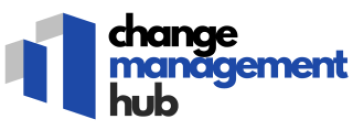
Understanding the Role of IT Documentation in Change Management
Integrating IT Documentation into Organizational Change
In the world of change management, IT documentation plays a pivotal role that is often underestimated. As organizations undergo transformations, the need to have reliable and comprehensive documentation becomes evident. The primary purpose of IT documentation in change management is to serve as a knowledge base that enables teams to have a clear understanding of the current and future states of IT systems.
Documentation assists in establishing a system of consistent communication. When team members access well-organized and up-to-date information, they are better equipped to adapt to changes, implement new processes, and maintain operational continuity. This ensures that organizations can respond efficiently and dynamically to evolving demands and technological advancements.
The Importance of a Structured Documentation Process
A structured documentation process contributes significantly to the effectiveness of change management by outlining each step necessary for implementing new technologies or modifying existing infrastructure. It acts as a guiding tool that employees can use to understand complex systems and infrastructure.
Central to effective documentation is the use of appropriate tools and software which facilitate the creation, maintenance, and retrieval of information. By using dedicated documentation systems, organizations can streamline their knowledge management practices, ensuring swift adaptability to changes and a reduction in miscommunication.
To establish best practices in IT documentation, there is a need to incorporate templates and clear guidelines, ensuring that technical documentation is consistently crafted and easy for team members to access and comprehend. This, in turn, fosters a culture of accountability and transparency.
For more insights on implementing effective change management, you can explore resources on mastering project governance in change management by visiting this article.
Key Components of Effective IT Documentation
Core Elements of Comprehensive IT Documentation
Creating comprehensive and effective IT documentation is a critical process for any organization aiming to ensure seamless change management. There are several key components that, when integrated, form the backbone of a robust documentation system. Below are the essential elements that should be considered:- Documentation Types and Formats: Recognize the various types of documentation such as process documentation, technical documentation, and system documentation. Using pre-designed documentation templates can streamline this step.
- Utilization of Documentation Tools: Leverage the best documentation tools and software available. These tools assist in creating and managing a knowledge base that is accessible and up-to-date, allowing employees to easily retrieve and utilize information.
- Incorporating Knowledge Management Practices: Effective documentation is not just about technical details but also about knowledge management. It enables teams to tap into the collective expertise of the organization, ensuring that valuable knowledge doesn't reside only in individual team members.
- Real-Time Updating Mechanisms: Implement a system for real-time updates to documentation. This ensures that any changes in processes, tools, or infrastructure are immediately recorded, keeping team members informed and aligned.
- Clear Process Documentation: Establish clear and concise process documentation that can be easily understood by team members. It helps clarify steps and reduces the time spent troubleshooting ambiguities.
- Integration of Feedback Loops: Regularly involve team members in the review and update process. Their insights will help refine and improve documentation practices, making them more effective over time.
- Infrastructure and Online Documentation: Ensure documentation also covers infrastructure details, which should be available online for easy access. This inclusivity assists organizations in examining all facets of their IT system.
Challenges in Maintaining IT Documentation
Navigating the Complexities of Documentation Maintenance
In the realm of change management, maintaining IT documentation presents a series of challenges that organizations must address to ensure smooth transitions and sustained progress. Understanding these hurdles is a critical step towards mastering the intricacies involved in documentation processes.
One significant challenge lies in keeping documentation up-to-date with rapidly evolving software and systems. As technological advancements occur at a fast pace, technical documentation can quickly become outdated, making it difficult for team members to rely on it for current information. Consistently creating documentation that reflects the latest changes in systems is crucial yet demanding.
Another obstacle relates to knowledge management within an organization. Effective dissemination and sharing of knowledge are often hindered by the lack of a centralized repository, such as a comprehensive knowledge base. Without a streamlined documentation system, valuable insights might be trapped within departmental silos, limiting organizational growth.
Moreover, the process of creating and maintaining documentation often lacks clear best practices and documentation templates, resulting in inconsistent styles and formats. This inconsistency can make documents difficult to understand, especially for employees new to the organization or those unfamiliar with certain technical terms and procedures.
Resource management also plays a critical role in documentation maintenance challenges. Allocating adequate time and resources for documentation tasks can be tricky, particularly in environments where team priorities shift frequently or documentation is viewed as a secondary task. As a result, documentation may suffer from neglect, further compounding the issues associated with outdated or incomplete information.
Ultimately, addressing these challenges requires a concerted effort to establish a sustainable documentation process. By implementing the appropriate tools and systems, organizations can improve documentation practices and better support effective documentation management, which in turn, strengthens overall organizational adaptability.
Strategies for Improving IT Documentation Practices
Effective Strategies to Enhance Documentation Practices
Enhancing your IT documentation involves several strategic steps that can significantly boost the efficiency of your change management processes. Implementing a structured approach is essential for developing a robust knowledge base and ensuring seamless adaptation across the organization.
Leverage the Right Tools for Documentation
Invest in sophisticated documentation software and tools that facilitate easy creation and management of technical documentation. These tools streamline the documentation process, providing templates that support different types of documentation and cater to varied needs of team members.
Establishing Consistent Documentation Processes
Create standardized procedures for documentation to ensure consistency and reliability. Process documentation should be detailed, offering clear guidance to employees on how to create and update documentation. Adopting best practices in documentation can greatly enhance the organization's ability to manage changes efficiently.
Conduct Regular Reviews and Updates
Regularly review documentation to ensure it reflects current processes, systems, and infrastructure. This ongoing maintenance is crucial to maintaining a dynamic and effective documentation system. Schedule routine audits and consider employee feedback to identify areas that need improvements.
Fostering a Documentation Culture
A culture that values documentation as a central component of knowledge management can lead to more engaged team members and improved organizational adaptability. Encourage teams to view this as an integral part of their responsibilities, and provide training sessions to build skills in the effective usage of documentation tools.
Aligning Documentation with Organizational Goals
Ensure that the documentation aligns with the broader objectives of the organization. This alignment can streamline the implementation of changes by providing clear, accessible, and relevant information to all stakeholders, boosting the overall effectiveness of change management initiatives.
The Impact of IT Documentation on Organizational Adaptability
Influence of Well-Crafted Documentation on Organizational Change
Creating high-quality documentation can significantly impact an organization's ability to adapt to change. A well-developed documentation system functions as a backbone for effective change management, enabling smooth transitions and reducing resistance among team members. An organization's knowledge base, meticulously documented, acts as a reliable repository for technical and process information that employees can access when undertaking new tasks or managing updates. With a systematic approach in place, team members have a clear understanding of the infrastructure, allowing them to execute changes effectively without unnecessary delays. Comprehensive documentation encompasses various types, such as process documentation, system documentation, and technical documentation. Utilizing documentation tools strategically generates a unified view that is accessible to all relevant team members, thus promoting collaborative knowledge management. To establish effective documentation practices, employing best documentation tools and templates that suit specific organizational needs is essential. A structured documentation process, maintained over time, fortifies the organizational capability to respond promptly to unexpected changes, thus enhancing adaptability. Incorporating documentation best practices also facilitates a culture of continuous learning among employees. Documentation scribing not only captures existing knowledge but serves as a foundation for innovation, empowering the team to excel as they embrace transformation. The time spent creating documentation pays dividends in terms of organizational resilience. By implementing a robust documentation framework, businesses are better equipped to navigate the complexities of change while ensuring minimal disruption. Organizations excel when documentation practices are aligned with change management strategies, ultimately leading to more effective transitions.Case Studies: Successful Change Management Through IT Documentation
Real-World Examples of Successful Change Management through IT Documentation
Understanding how IT documentation can effectively aid in change management is often best illustrated through real-world case studies. These examples highlight how organizations have harnessed documentation tools and strategies to enhance their adaptability and streamline their processes.- Tech Firm Revolutionizing Software Deployment
- Healthcare Provider Enhancing Patient Data Management
- Manufacturing Company Improving Supply Chain Operations













